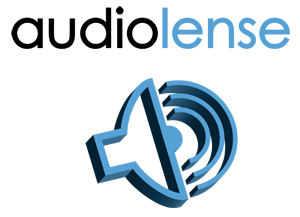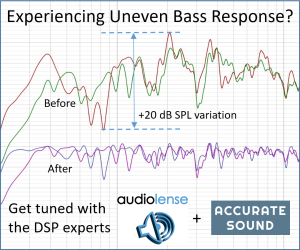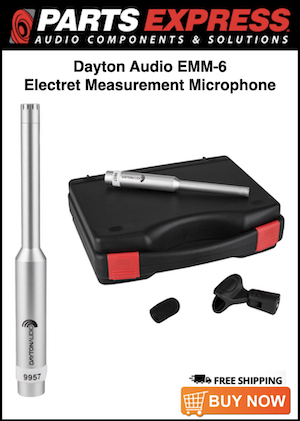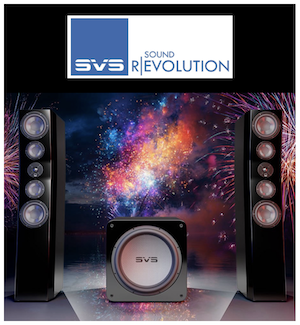-
AUDIO VIDEO PROCESSING, SETUP & ENVIRONMENTOfficial REW (Room EQ Wizard) Support Forum Audiolense User Forum Calibration Equipment Auto-EQ Platforms / Immersive Audio Codecs Video Display Technologies / Calibration AV System Setup and Support Listening Room / Home Theater Build Projects Room Acoustics and Treatments AV Showcase Movies / Music / TV / Streaming
-
AUDIO VIDEO DISCUSSION / EQUIPMENTHome Theater / Audio and Video - Misc Topics Essence For Hi Res Audio AV Equipment Advice and Pricing Awesome Deals and Budget AV Equipment AV Receivers / Processors / Amps UHD / Blu-ray / CD Players / Streaming Devices Two Channel Hi-Fi Equipment DIY Audio Projects Computer Systems - HTPC / Gaming HD and UHD Flat Screen Displays Projectors and Projection Screens AV Accessories Buy - Sell - Trade
Navigation
Install the app
How to install the app on iOS
Follow along with the video below to see how to install our site as a web app on your home screen.
Note: This feature may not be available in some browsers.
More options
You are using an out of date browser. It may not display this or other websites correctly.
You should upgrade or use an alternative browser.
You should upgrade or use an alternative browser.
How to make a first order crossover in Audiolense?
- Thread starter 2234rew
- Start date
kevinzoe
Member
- Joined
- Jun 10, 2022
- Posts
- 39
More
- Preamp, Processor or Receiver
- PrimaLuna DiaLogue Premium preamp
- Main Amp
- PS Audio BHK Signature 250 stereo amp
- Additional Amp
- Valve Amplification Company 30/30 Renaissance
- DAC
- exaSound e48 (8 channels)
- Computer Audio
- JRiver
- Front Speakers
- Acoustic Zen Crescendos
- Subwoofers
- Pair of Rythmik F15's
- Other Equipment
- Cables by: TEO Audio, Cardas and AudioSensibility
2234rew,
I posted something that answered this question a while back so here is the info again:
> 1st order (6dB/oct.) = 6.5 - 7.5 Audiolense xover filter width
> 2nd order (12dB/oct) = 3.8 - 4.3
> 3rd order (18dB/oct) = 3
> 4th order (24dB/oct) = 2.6
The above are fairly accurate representations for 1-2 octaves out from the xover frequency but they represent curved lines where the traditional linear sloped xovers are straight lines so they diverge from each other at some point. Hope this is good enough and is mildly helpful ...
I posted something that answered this question a while back so here is the info again:
> 1st order (6dB/oct.) = 6.5 - 7.5 Audiolense xover filter width
> 2nd order (12dB/oct) = 3.8 - 4.3
> 3rd order (18dB/oct) = 3
> 4th order (24dB/oct) = 2.6
The above are fairly accurate representations for 1-2 octaves out from the xover frequency but they represent curved lines where the traditional linear sloped xovers are straight lines so they diverge from each other at some point. Hope this is good enough and is mildly helpful ...
Thanks, this is VERY helpful2234rew,
I posted something that answered this question a while back so here is the info again:
> 1st order (6dB/oct.) = 6.5 - 7.5 Audiolense xover filter width
> 2nd order (12dB/oct) = 3.8 - 4.3
> 3rd order (18dB/oct) = 3
> 4th order (24dB/oct) = 2.6
The above are fairly accurate representations for 1-2 octaves out from the xover frequency but they represent curved lines where the traditional linear sloped xovers are straight lines so they diverge from each other at some point. Hope this is good enough and is mildly helpful ...
I trust @juicehifi agrees with these numbers too, just as a check
juicehifi
Audiolense
- Joined
- Feb 5, 2018
- Posts
- 900
^ It depends on how you look at it. The referred figures seem to emphasis the stop-band, but if you emphasis driver ioverlap you may draw a different conclusion.
A 2 octave width filter is 6 dB down one octave into the cutoff region, which is more or less the same as a 1st order. So as far as driver integration & overlap goes, I'd say that corresponds to a 1st order filter. But after 2 octaves the 2octave filter is literally silent, while a 1st order filter is "only" 12 db down, which means that the conventional 1st order filter will excite the driver significantly at lower frequencies. So the 2 octave xo is like a 1st order filter from 0 dB to -6 dB, but with a very steep stop-band following
This means that you e.g. can cross over drivers closer to the where the distortion increases, yet have a fairly shallow integration with the neighbour driver. You can run the tweeter perhaps one octave lower with less strain, and you could possibly run the bass one octave higher etc. This gives you a greater design freedom.
There is also the fact that steeper crossovers have more ringing than more shallow crossovers. The 2 octave filter has a time domain behavior that is quite close to a regular 1st order filter. A conventional high order crossover has much stronger ringing than the ones used in Audiolense.
A 2 octave width filter is 6 dB down one octave into the cutoff region, which is more or less the same as a 1st order. So as far as driver integration & overlap goes, I'd say that corresponds to a 1st order filter. But after 2 octaves the 2octave filter is literally silent, while a 1st order filter is "only" 12 db down, which means that the conventional 1st order filter will excite the driver significantly at lower frequencies. So the 2 octave xo is like a 1st order filter from 0 dB to -6 dB, but with a very steep stop-band following
This means that you e.g. can cross over drivers closer to the where the distortion increases, yet have a fairly shallow integration with the neighbour driver. You can run the tweeter perhaps one octave lower with less strain, and you could possibly run the bass one octave higher etc. This gives you a greater design freedom.
There is also the fact that steeper crossovers have more ringing than more shallow crossovers. The 2 octave filter has a time domain behavior that is quite close to a regular 1st order filter. A conventional high order crossover has much stronger ringing than the ones used in Audiolense.
Popular tags
20th century fox
4k blu-ray
4k uhd
4k ultrahd
action
adventure
animated
animation
bass
blu-ray
calibration
comedy
comics
denon
dirac
dirac live
disney
dolby atmos
drama
fantasy
hdmi 2.1
home theater
horror
kaleidescape
klipsch
lionsgate
marantz
movies
onkyo
paramount
pioneer
rew
romance
sci-fi
scream factory
shout factory
sony
stormaudio
subwoofer
svs
terror
thriller
uhd
ultrahd
ultrahd 4k
universal
value electronics
warner
warner brothers
well go usa

















